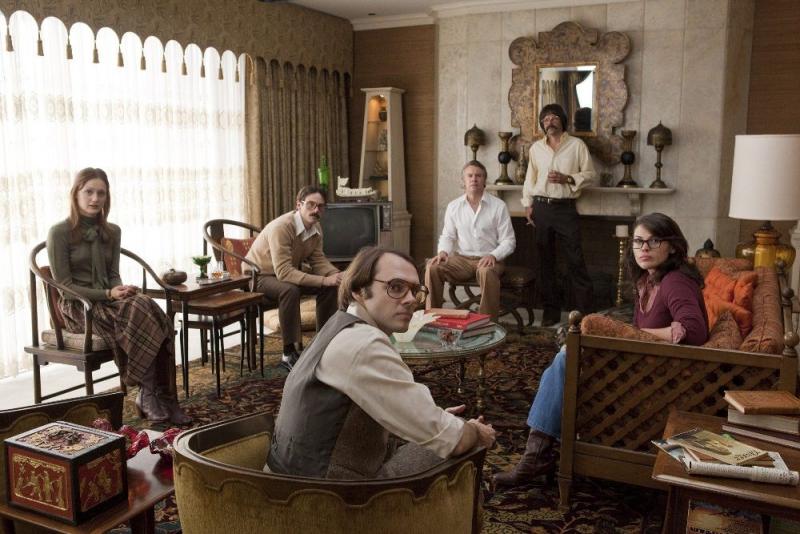However, despite these authentic
parts of the film, many details were added by the film business to make the movie
more interesting to watch, and to appeal to a larger portion of viewers. One of
these aspects is shown in how Tony Mendez is depicted in the film to be having
trouble with his marriage, although his wife actually was the one to drive him
to the airport when he left for Iran (Haglund). Through this, the film shows
how the directors try to make the movie more interesting, and in some ways make the main
character more relatable by making him have personal problems. In addition to
these added character developments, the movie also minimizes Canada’s
involvement in the rescue as Canadians were the ones that checked out the
airport before the hostages had to go through it, bought their tickets, and
were the primary people that helped put the plan in action (Schaefer) as according
to Jimmy Carter, who was the US President at the time, “ninety per cent of the
contributions to the ideas and the consummation of the plan was Canadian” (qtd.
in Hertzberg ). The fact that most of the planning, and rescuing the hostages in the movie
is shown to be done by the United States promotes the commonly accepted idea of
America’s power, and downplays how Canada, in fact, also deserved a large part of
the spotlight. Finally, the movie embellishes much of what actually happened
with suspenseful events that actually did not occur to make the film have more
action.
Mark Lijek, one of the six hostages, “pointed out that there were no arguments over their cover story as a movie crew, no interrogations by the Republican Guard, no armed guards pursuing an airplane down the runway”(Pond). This demonstrates just how far the movie business will go to get the viewers into the movie. If the movie had shown how the hostages had actually gotten through the airport and onto their plane smoothly, without any problems, then the ending of the movie would not have been so suspenseful, and the movie may not have been so incredibly popular. In addition to this added drama, the movie focuses on the six individual hostages, and their story, and despite occasional mentions of the other hostages left in Iran, the hostages, who were left in Iran for 444 days (Lawrence), are rarely mentioned. Because the story of the six hostages lets the movie focus on the different characters specifically, and what they are thinking, the other large group of hostages are barely talked about, making the story more about Tony Mendez, and the six hostages, rather than how the other hostages were released on January 21st, 1981 (“Iran Hostage Crisis”) even after a failed rescue caused the deaths of eight Americans after the crashes of US helicopters (“Hostage Rescue Mission Ends in Disaster”).
Mark Lijek, one of the six hostages, “pointed out that there were no arguments over their cover story as a movie crew, no interrogations by the Republican Guard, no armed guards pursuing an airplane down the runway”(Pond). This demonstrates just how far the movie business will go to get the viewers into the movie. If the movie had shown how the hostages had actually gotten through the airport and onto their plane smoothly, without any problems, then the ending of the movie would not have been so suspenseful, and the movie may not have been so incredibly popular. In addition to this added drama, the movie focuses on the six individual hostages, and their story, and despite occasional mentions of the other hostages left in Iran, the hostages, who were left in Iran for 444 days (Lawrence), are rarely mentioned. Because the story of the six hostages lets the movie focus on the different characters specifically, and what they are thinking, the other large group of hostages are barely talked about, making the story more about Tony Mendez, and the six hostages, rather than how the other hostages were released on January 21st, 1981 (“Iran Hostage Crisis”) even after a failed rescue caused the deaths of eight Americans after the crashes of US helicopters (“Hostage Rescue Mission Ends in Disaster”).
To conclude, the movie, Argo tells the story of six hostages trying to escape Iran during the Iranian Revolution by using a fake movie. It is clear that the directors did attempt to be accurate in many ways such as how they portrayed the six hostages, in how the Americans first reacted to the revolutionaries storming the US Embassy, and in how they depicted the environment of Iran outside the Embassy with protesting and violence. The directors also included a sequence of events at the beginning to make the movie more understandable and to give the facts before the movie started. However, in order to make it more interesting, the facts had to be altered, and the dramatic conclusion with all the problems going through the airport to the final chase by the Iranians was added, although both events never really happened. Also, the director only focused on the six hostages, and Tony Mendez, and although it was their story the movie was telling, this focus took away from what was going on in Iran with the other hostages, and what the Iranians were doing throughout the revolution. The full impact the Canadians made on the rescue was also downplayed, which demonstrates the common idea of the United States power being shown, although they did not do all the work. These details were added to make the movie more suspenseful, and appealing to all audiences.
Doc 5 Hostages in movie Argo


No comments:
Post a Comment